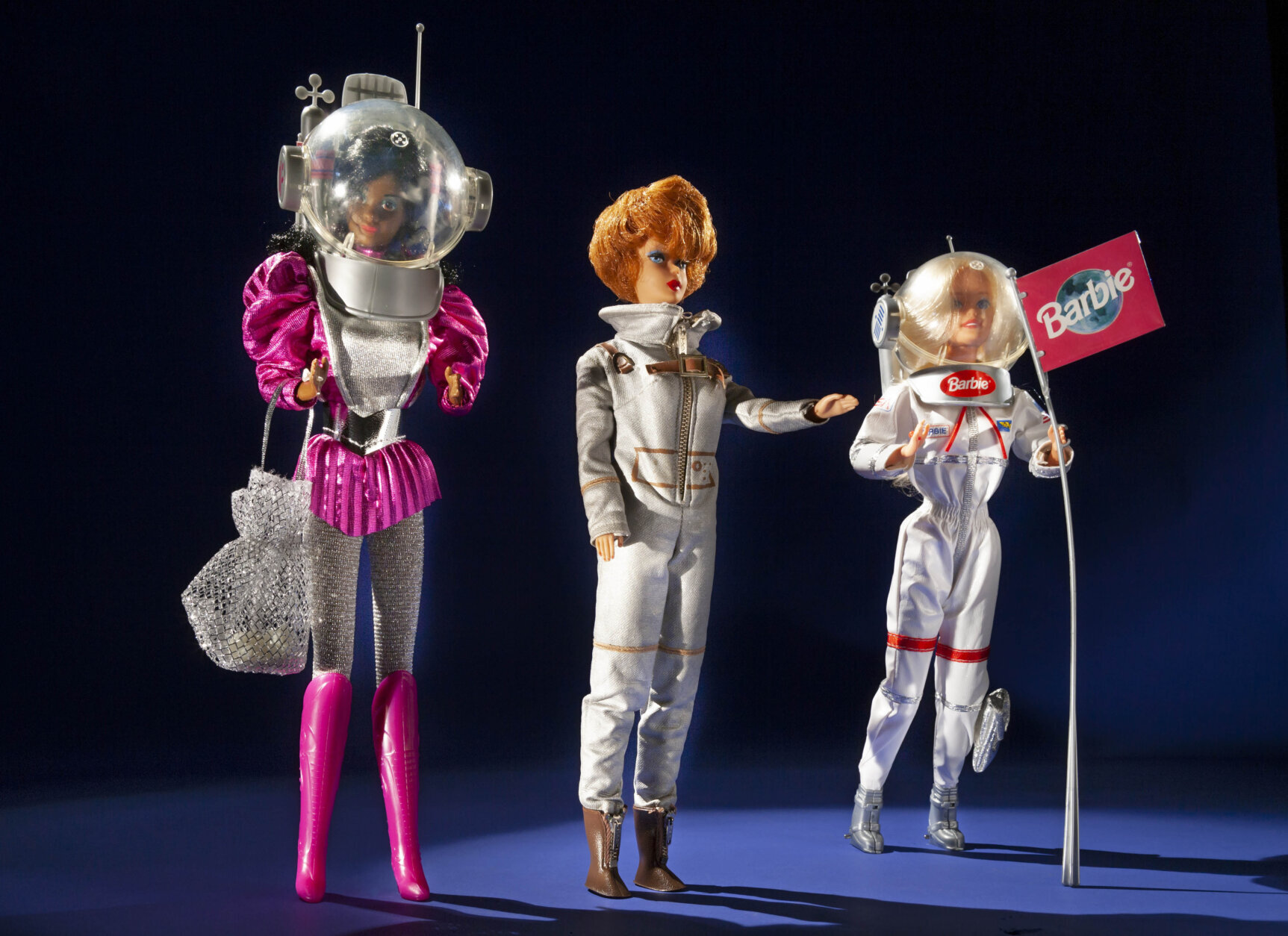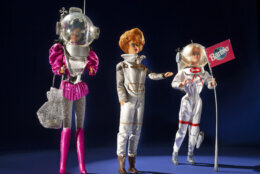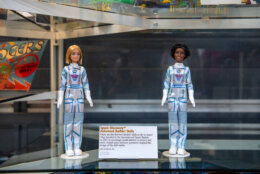



Since dropping on the scene in 1959, Barbie has been a fashion designer, a nurse, a ballerina, a flight attendant, a fashion model, lead singer of The Rockers, a veterinarian, a pilot, an executive and a host of other professions.
Last year, she came back from space during her most recent stint as astronaut, and you can learn more about her trip to the International Space Station at the Smithsonian National Air and Space Museum’s Steven F. Udvar-Hazy Center in Virginia.
Part of the museum’s new Space Discovery series, the first two Barbie dolls that have flown to space are on display in the James S. McDonnell Space Hangar. It’s just in time for the movie “Barbie,” which premieres this week.
“They went to the International Space Station thanks to a collaboration between Mattel (which makes Barbie) and NASA,” said Margaret Weitekamp, chair of the Space History Department of the museum.
View this post on Instagram
The two dolls join three other Barbies in the museum — a Barbie in a Miss Astronaut outfit from 1965, an African American Barbie from 1986 in a silver and purple space outfit and a 1994 Astronaut Barbie commemorating the 25th Anniversary of Apollo 11. Weitekamp said the new dolls were a way to bring the display to the present.
Barbie became an astronaut in 1965, nearly two decades before NASA sent its first woman to space. Since then, there have been several versions of astronaut Barbie. We explore the history of Barbie in space in our latest @AirSpacePod: https://t.co/Y8dXQS5GKj pic.twitter.com/lE3OH0FVhi
— National Air and Space Museum (@airandspace) May 28, 2023
It’s not the first time the museum has highlighted Barbie’s careers in aviation and space exploration. In 1995, Barbie dolls joined other toys in an exhibit that traced her career in space and aviation.
Barbie has long been an innovator.
Before Mattel released the first Barbie, dolls typically came in the form of babies and taught children how to parent a baby. But Barbie allowed the child, presumably a girl, to imagine herself as a young adult, Weitekamp said.
“The expression at the time is Barbie was a single, career girl. And so through those careers, you could imagine yourself doing other things,” including professions that “a lot of women didn’t have access to,” Weitekamp said.
In 1965, nearly two decades before Sally Ride became the first American woman in space, Mattel created an astronaut outfit for the Barbie doll, as NASA was in the middle of the Gemini Program. The program was the space agency’s early human spaceflight program and a precursor to the Apollo missions.
“That’s at a time when the U.S. astronaut corps is entirely white men. And there was not any space for women to participate as an astronaut,” Weitekamp said.
When Barbie first came out, you bought the doll and outfits separately. By the 1980s, Mattel started selling the dolls that included different outfits and accessories, which Weitekamp said was part of the “fun of the play.”
The 1986 Astronaut Barbie outfit — purple jumpsuit, puffy sleeves, a pleated skirt known as a peplum and sparkly silver leggings — was emblematic of the decade, which Weitekamp described as “science fictiony” and reminiscent of the outfit singer Olivia Newton-John wore in the “Physical” video or what actress Jane Fonda wore in her workout videos.
Here’s to the groundbreaking female astronauts & scientists of our past and present who not only encourage, but teach us that there are no boundaries to what we can do. 💫 #YouCanBeAnything #NationalSpaceDay #fbf #btb: 1986, Astronaut #Barbie pic.twitter.com/CgwtI5I7rZ
— Barbie (@Barbie) May 1, 2020
“Not in any way a functional astronaut outfit — has very high knee-high boots. It is kind of an astro-fabulous look for Barbie,” Weitekamp said.
Recent astronaut Barbie dolls are dressed more practically, and they also go through their own version of astronaut training to get ready for their trip to space. This includes making sure that there aren’t any small accessories, such as a tiny shoe, or a strand of Barbie’s hair, that could float around in the absence of gravity.
“Mattel did extensive work with NASA to make sure that these dolls were ready to fly. And getting them back then allows us to tell a little bit of that story,” Weitekamp said.
Barbie: Shaping the world through play
Barbie’s place in the Air and Space Museum illustrates the myriad ways everyday people get to intersect with spaceflight.
While most people probably won’t become astronauts or build or fly a spacecraft, Weitekamp said that toys — whether that’s action figures or Barbie dolls — are one of the ways that people have been able to imagine and get excited about spaceflight.
“Barbie is an important way that people have imagined, not just going into space, but being a professional in the airlines or being a military pilot,” Weitekamp said. “Having Barbies in the collection has been an important part of that broad appeal of thinking about all of the ways that aviation and space flight have been in your world.”
One of the critiques against the Barbie doll has been that “tall, statuesque blondness is universal,” Weitekamp said, adding that it was only in the 1980s that an African American Barbie debuted that was Barbie and not Barbie’s friend who was Black.
In recent years, Barbie’s broad appeal has broadened even further to include different body shapes. Earlier this year, Mattel introduced the first Barbie representing a person with Down syndrome. And to celebrate this year’s International Women’s Day, Mattel introduced one-of-a-kind dolls in the likeness of female role models.
Weitekamp said that what Barbie has been able to do — with all the different outfits that illustrate the different ways of working and being in the world — is to enable girls to imagine all kinds of things by playing with the costumes as intended and by “working against type” to play with them as they want to.
“I have a lot of faith in girls and their power to shape the world as they want to through their play,” Weitekamp said, adding, “Barbie has pride of place” at the museum.








